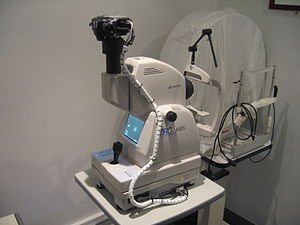The world is changing faster than most of us can internalize. Where once the only way to receive any form of medical attention was by visiting a doctor’s office in person – the field of ‘telemedicine’ has taken hold and shows no signs of slowing down. This is true in the field of optometry and ophthalmology as well. Let’s consider this subject in greater depth in this blog.
Telemedicine itself can be traced back to the first time NASA sent astronauts into space. Medical equipment was designed to keep track of a variety of human systems such as respiration. It was an easy leap to applications in the real world, especially with the advent of the internet. Teleophthalmology, specifically, is the business of treating a patient’s eyes using digital equipment and telecommunications.
Teleophthalmology applications are broad. They give patients access to the breadth of eye care specialists. This is especially valuable to those who live in remote areas and are unable to travel to an optometrist or ophthalmologist office. Services include (but are not limited to) screening, monitoring, diagnosing and even distance learning. The advanced technology allows eyecare specialists to take images of the eye and provide expansive care to patients who might otherwise be unable to receive medical and/or ocular help. Surprisingly, the equipment necessary to perform most teleophthalmology usually includes nothing more than a camera, and computer with internet capabilities. The latter is used to transmit images and address the accounting and insurance issues as well.
Digital imaging is a relatively recent development having come into existence after the internet and networking capabilities had been advanced. Current applications of teleophthalmology are limited to specific types of ocular problems including (but not limited to) diabetic retinopathy, macular degeneration and abnormalities of the eye due to such conditions as hypertension or cognitive impairment.
There are now a variety of mobile applications in teleophthalmology as well. These digital devices have been a driver of advancements in this discipline and there is no reason to believe this will slow down in the future. The aim is to ensure perfect vision for all persons in our lifetime. Teleophthalmology is not a phenomenon limited to the United States. It is being practiced in many countries around the world and may be the singular delivery system of the future. Advantages include its cost-effectiveness, extended patient care and community training.
For now, please bring all your eye care needs to the specialists at Island Eyecare.


